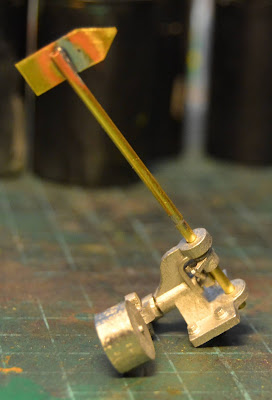Sometimes you're just lucky. I had one of those days last weekend. Getting my hands on an classic Danish model railway book. My luck didn't stop there. As I opened the book I noticed an image of a narrow gauge industrial steam loco glued into the book with two strips of christmas stamps.
 |
| "From me to you" in hand writing and the Danish national christmas stamp from 1975 used to fix the photograph to the book's half title. |
The image shows a somewhat dismantled and negleted Orenstein & Koppel 4-wheeled steam loco of a 20-30 hp type. Probably built 1910-25. There are no sidetanks which is unusual for O&K-locos of this model. A lady is waving to the photographer from the cab. Perhaps a Sunday trip turned loco spotting? She is dressed in a style that could be the 1930's-1940's, but probably the style could pass in the early 1950's as well. While the book is Danish, there are no features in the image proving the loco to be a Danish one, although it may very well be so.
 |
| "Hi, darling! I'm a loco driver now." |
I will pass the image on in my network, and hopefully some expert will be able to help identify the locomotive.









